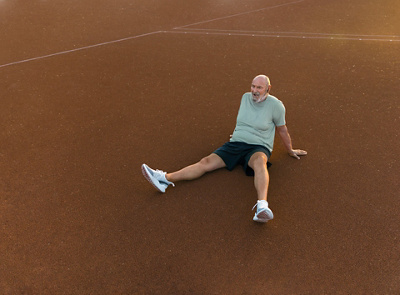When a stroke (also called cerebrovascular accident, apoplexy or cerebral infarction) occurs, there is a sudden collapse of brain functions. Permanent damage should often be expected here. Therefore, it is vital that a stroke is quickly diagnosed and the exact causes are found.
What are the symptoms?
How do I recognise a stroke?
The symptoms can be identified with the BE FAST tests:
Balance Issues:
Ask the person if they feel dizzy or have problems with their balance. Is there a tendency to fall or unsteady gait?
Eyes:
Ask the person if they have double or blurred vision. Test the person's vision by confirming a number of fingers. Is the correct number given?
Face:
Ask the person to smile. Is their face drooping on one side?
Arms:
Ask the person to extend their arms out in front of them and turn their palms facing upwards. Does one arm drop, or do the palms of the hand turn inwards?
Speech:
Ask the person to repeat a simple sentence after you. Is their speech slurred, incoherent or hard to understand?
Time:
Can you answer yes to one of the questions? Then call the emergency number 144 immediately and describe the symptoms.
Early signs and symptoms of stroke
The symptoms of a stroke occur suddenly. Sometimes there are early symptoms, such as dizziness, temporary vision problems, speech disturbances, loss of feeling or problems walking. These temporary symptoms should be treated as warning signs of a stroke.
Depending on which region of the brain is affected, a stroke can cause different symptoms. Strokes are often accompanied by the following symptoms:
- One-sided paralysis
- Vision, speech and hearing disturbances
- Dizziness
- Severe headache
What should you do?
What should I do if a person has had a stroke?
If you suspect a person has had a stroke, you must act immediately, as prompt medical treatment can reduce permanent damage.
- Call 144 to report the emergency
- Explain that you think the person may have had a stroke
- Give the name, address, and age of the patient
- Position the patient on a hard surface with their upper body slightly elevated
- Open tight clothes, ties, or bras
- Do not give the patient anything to drink, because their ability to swallow might be impaired
- Ask passers-by to help flag down the ambulance so that you can stay with the patient and help keep them calm
What happens during a stroke?
During a stroke, the brain does not receive sufficient oxygen and nutrients. The cause of this is either vascular occlusion or cerebral haemorrhage. Both will cause damage to the affected brain tissue.
When a stroke is suspected, it is vital to take immediate action. If first aid is given, this will help to minimise the extent of long-term damage following a stroke.
Causes of strokes
Stroke due to vascular occlusion
A stroke is characterised by a sudden circulatory disorder in the brain. The cause of this disorder is usually occlusion in a cerebral artery as a result ofarteriosclerosis or an embolism. This is known as an ischaemic stroke.
Stroke due to cerebral haemorrhage
However, a circulatory disorder can also be the result of cerebral haemorrhage. For example, if a brain aneurysm bursts. This is known as a haemorrhagic stroke.
Risk factors
The risk factors for a stroke are generally the same as for a heart attack:
- High blood pressure
- High cholesterol
- Overweight
- Diabetes
- Smoking and lack of exercise
Another significant risk factor is atrial fibrillation. If cardiac arrhythmia occurs , blood clots may form in the heart. They are then transported to the brain, where they cause an embolism.
Early symptoms
The symptoms of a stroke occur suddenly. The following symptoms sometimes occur beforehand :
- Dizziness
- Temporary vision problems
- Speech problems
- Loss of sensation or difficulty walking
Such temporary episodes are known as transitory ischaemic attacks and constitute warning signs of a stroke. A stroke can cause different symptoms, depending on which region of the brain is affected.
Characteristic symptoms of cerebral infarction include the following:
- One-sided paralysis
- Vision, speech and hearing problems
- Severe dizziness
- Sudden headache
- Loss of consciousness
Symptoms of this type which occur suddenly should be immediately checked by a doctor, even if they disappear again after a short time. Time is the most important factor to prevent permanent damage from a stroke.
Examination and diagnosis
Ischaemic and haemorrhagic stroke cannot be differentiated solely on the basis of the symptoms. Both lead to the death of brain cells and the loss of brain functions.
It is only possible to identify whether a stroke stems from a haemorrhage or the occlusion of a cerebral artery with the help of computed tomography(CT) and magnetic resonance imaging (MRI).
Treatment following a stroke
The treatment depends on the severity of the stroke. If a cerebral haemorrhage is the cause, the source of the bleeding must usually be stopped with surgery. If vascular occlusion exists, there are medical and surgical options to deal with it.
Find out more about the different treatment options in the endarterectomy and brain aneurysm surgerysections.
Prevention
If there is a known risk of stroke (atrial fibrillation, transitory ischaemic attacks), blood thinners can be used as a preventative measure.



